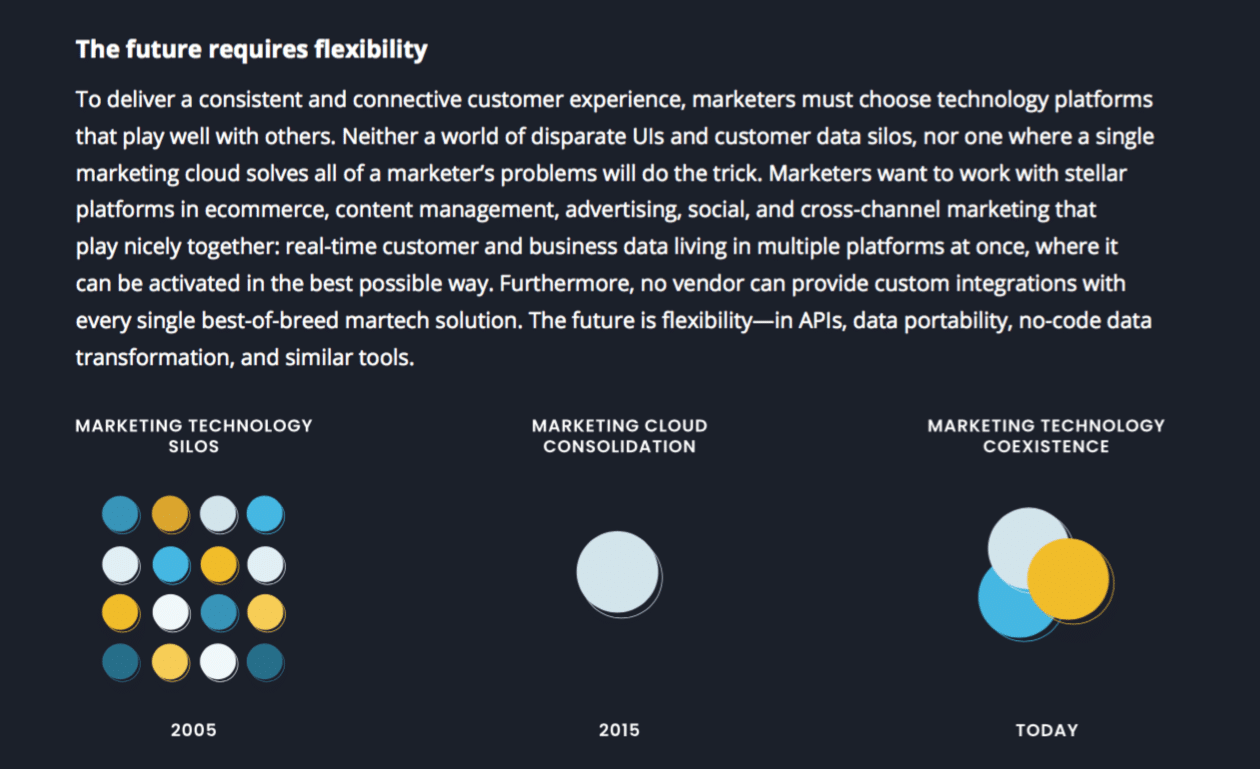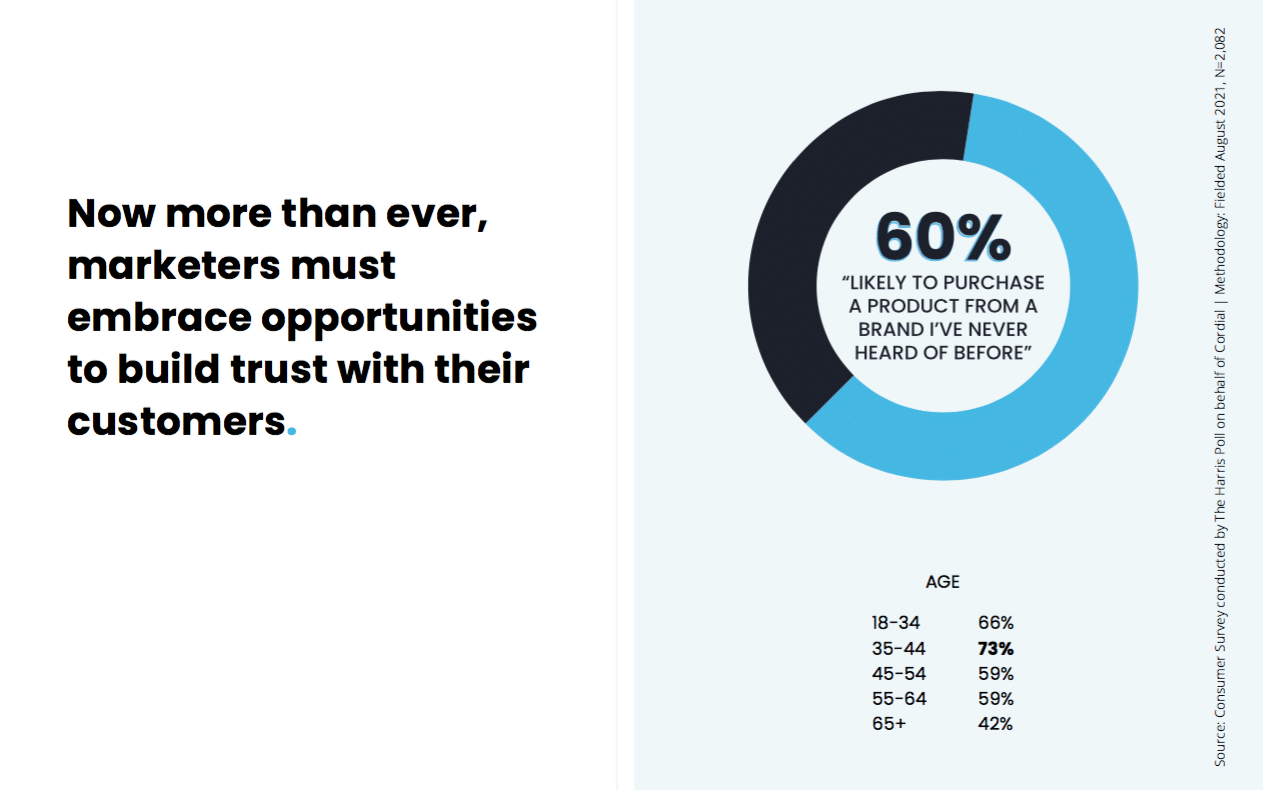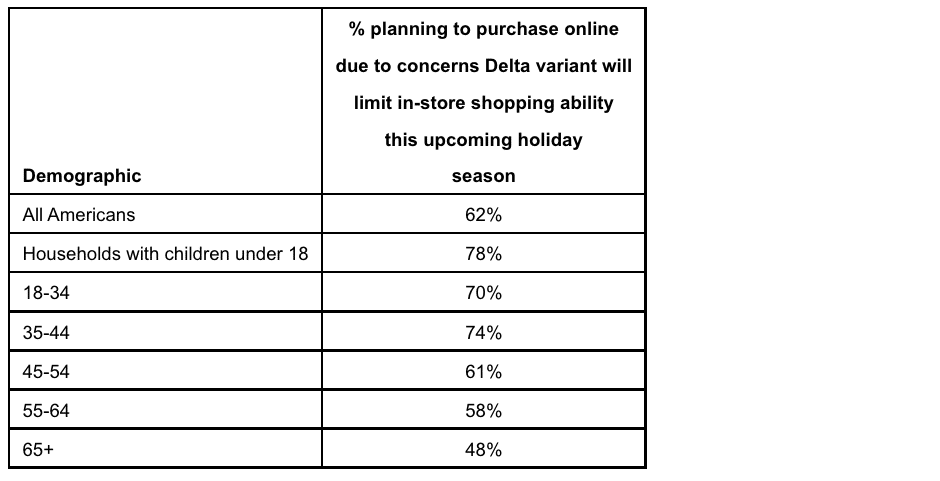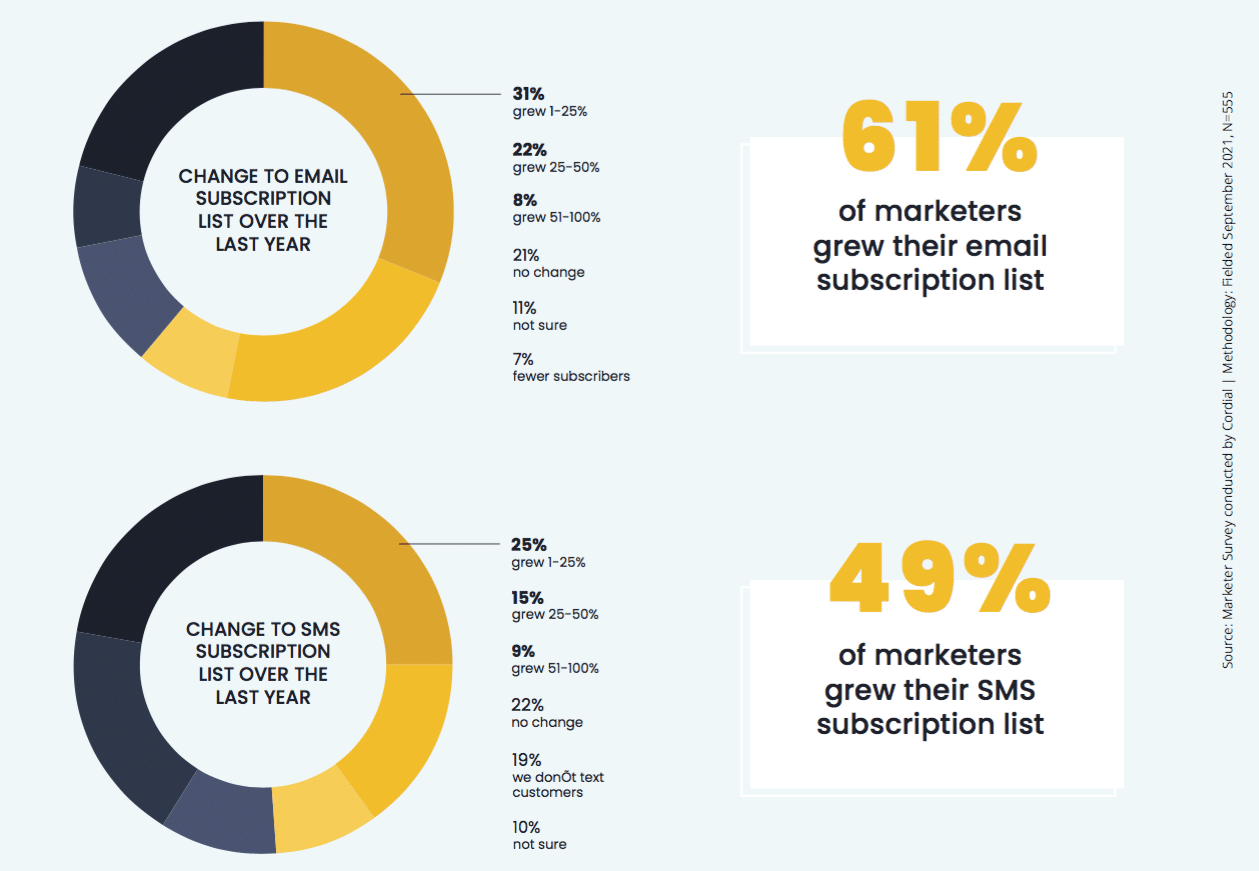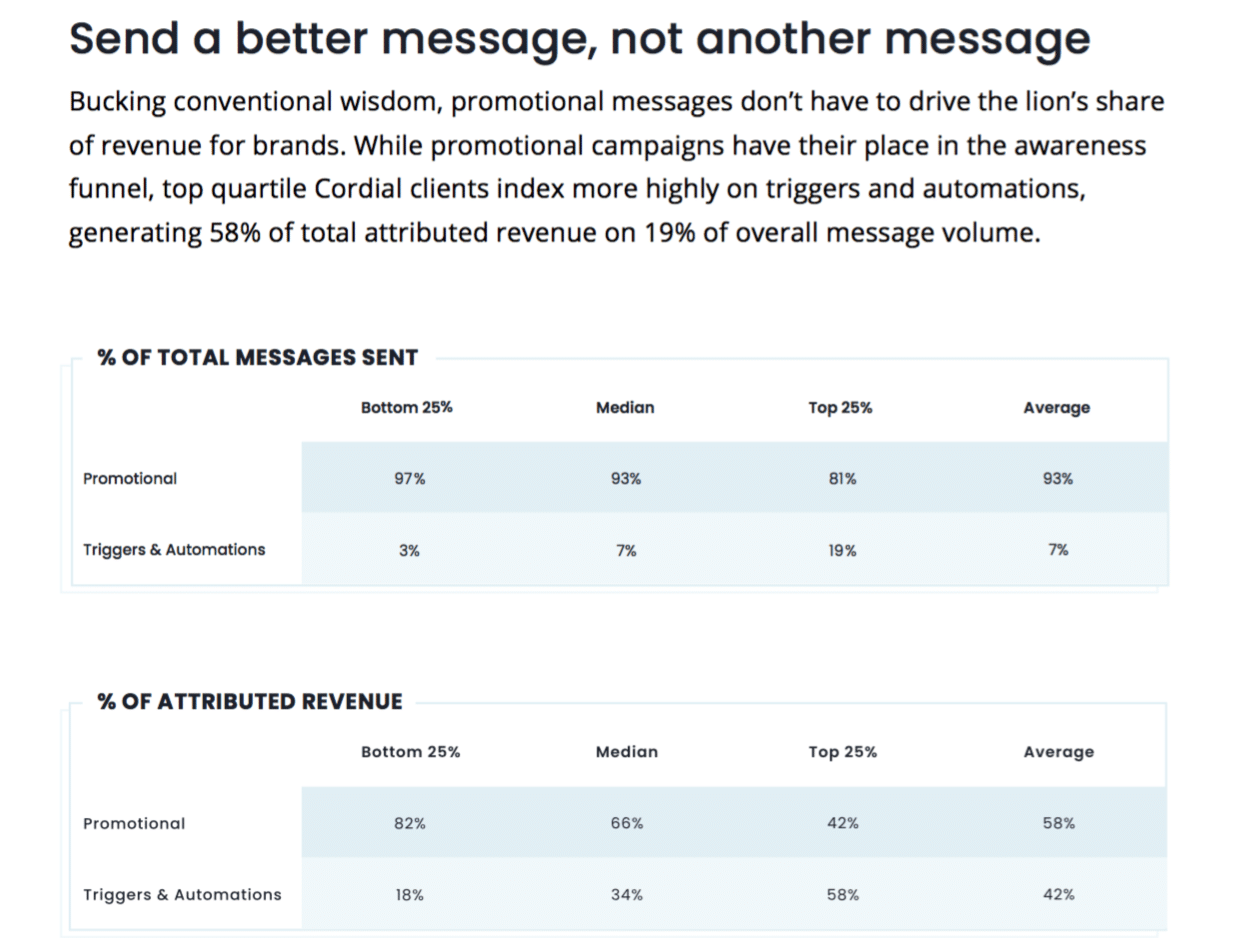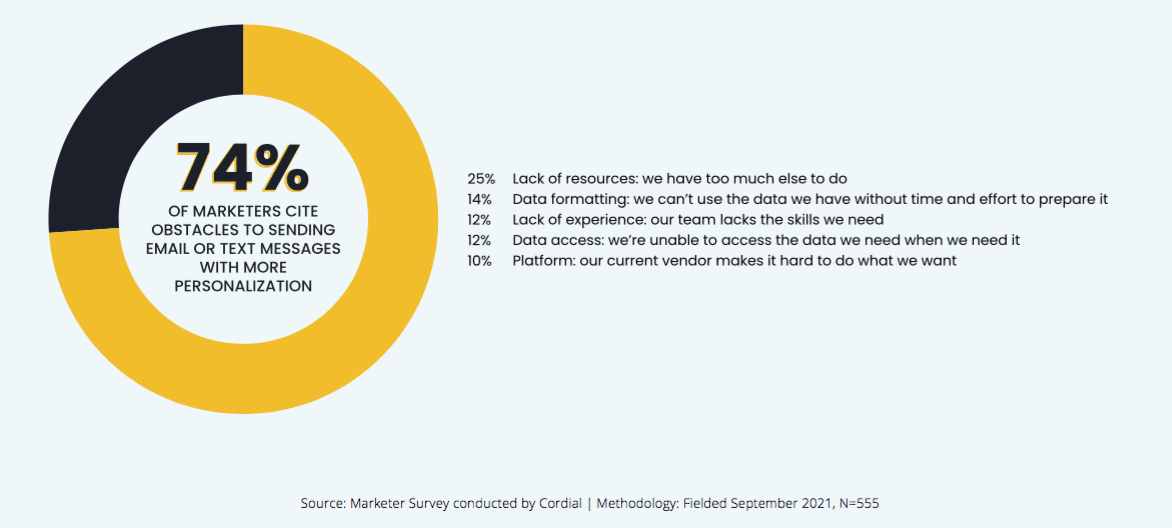Brand communicators have had in hammered into their heads for months now—personalization is the critical differentiator between marketing success and failure with today’s consumers. And comms pros have been trying to hammer the concept into their own strategies as a result, and they think they’re doing a good job. But is that the case?
New research from cross-channel marketing platform Cordial finds that, yes, marketers do think they’re doing a good job of incorporating personalization—but consumers tend to disagree. Overall, brands are struggling to harness the promise of personalization—an issue that has serious implications for future sales and revenue at many leading retailers.
While 50 percent of marketers say that most of the emails they have sent in the past 6 months have been personalized to their recipients, just 34 percent of American consumers who shop in response to emails from brands say that the majority of emails they received over the same period were personalized from brands, with about half (53 percent) perceiving them as generic and not tailored to them at all.
For its comprehensive new Cross-Channel Marketing Study, the firm conducted two surveys: one on over 2,000 American adults conducted by The Harris Poll; and another on over 550 marketers conducted by Momentive, indicated a wide disconnect between the perceptions of brand marketing leaders and their customers when it comes to digital communications:
“Our findings demonstrate the importance of recognizing and creating unique messaging experiences for each customer,” said Carrie Parker, SVP of marketing at Cordial, in a news release. “While many marketers think they’re providing customized offers and outreach, it’s clear that their efforts are missing the mark with consumers, and could be hurting sales and brand loyalty in the process.”
The study does contain some good news for marketers—notably that consumers are very open to communication from both familiar brands and brands they have never heard of before, with the pandemic serving as a major cause of this willingness to interact and make purchases digitally.
Real-time engagement even more critical as Delta variant prompts more online holiday shopping
As the pandemic continues, 62 percent of Americans say they are planning to make purchases from brands online this holiday season specifically because of concerns about the Delta variant limiting their ability to shop in-store, and 59 percent of American online shoppers said they shopped slightly or significantly more online during the pandemic.
These trends are especially pronounced among coveted demographics for brands: 18-45 year olds, and families with children.
“The acceleration of ecommerce has been the defining story of the pandemic for retailers,” said Parker. “Consumers are shopping earlier, and online, to ensure that they can get what they need. This holiday season represents a real make-or-break moment for many retailers to ensure they are keeping customers informed of relevant real-time changes with product availability and communicating in a meaningful way.”
The importance of the right personal touch
If consumers are more open to cross-channel marketing communications than ever before, the gap in perception around personalized messaging can have a significant impact on a brand’s bottom line.
The study finds that 83 percent of consumers have shopped in response to emails from brands, while 67 percent have shopped in response to text messages from brands.
But for brands seeking to improve results, it’s clear that personalization is key: consumers are almost twice as likely to shop in response to an email or text that is personalized than one that is not:
- Consumers who say that most of the emails they received from brands in the past 6 months are personalized, are more likely than those who say that most of the emails they received from brands in the past 6 months are generic to shop in response to emails from brands (27 percent vs. 15 percent).
- Consumers who say that most of the texts they received from brands in the past 6 months are personalized, are more likely to shop in response to texts from brands (26 percent) vs. just 11 percent among those who say that most of the texts they received from brands in the past 6 months are generic.
“Consumers are clearly comfortable with a high level of communication from brands they trust,” said Parker. “However, at the moment, many brands are not capitalizing on the trust they have worked so hard to build, with few consumers, only 34%, saying the emails they received in the past 6 months from brands are actually personalized for them.”
Brands should send a better message, not another message
In more good news for marketers, Cordial also released aggregate data from a subset of clients in ecommerce to highlight how brands can use customer data to improve the health of their business. The findings show that by sending fewer, but more targeted messages such as triggers, marketers can drastically improve performance and customer loyalty.
Triggered messages, prompted directly by customer behavior, drive higher Revenue per Messages (RPM) than promotional “batch” messages—regardless of personalization. Through basic triggers, such as browse and cart abandonment or subscription reminders, marketers can drive 6-7x RPM and drive a lift in Average Order Value (AOV) by 43 percent on average.
Additionally, brands are generating on average 42 percent of their total email revenue from triggers and automations, which only account for 7 percent of overall email volume. This demonstrates the clear opportunity for marketers to create more personal experiences, using customer behavior data to trigger relevant messages, which in turn increase overall revenue and engagement.
“The key challenge for brands in this era is the ability to harness their data to build more intelligent messages and more personal experiences,” said Parker. “Personalization capabilities have moved far beyond just customizing messages using basic information, and yet for many businesses, that represents the sum total of their approach. Today’s digital consumers expect a tailored experience with relevant offers and products based on previous engagements and interactions—and data is the key to unlocking all of that.”
Download the full report here.
The consumer survey was conducted online within the United States by The Harris Poll on behalf of Cordial between August 10-12, 2021 among 2,082 adults ages 18+. This online survey is not based on a probability sample and therefore no estimate of theoretical sampling error can be calculated.
The marketer survey was conducted by Momentive on behalf of Cordial between September 9-12, 2021, among 555 adults, 21 and older, who live in the United States. The sample was balanced by age, race, among other demographic variables, according to the U.S. Census.


